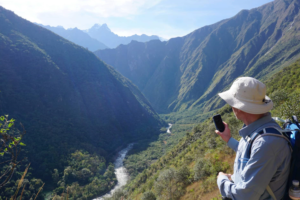Norway, with its rich Viking history, tells an incredible story of the ancient Nordic people who sailed the seas, traded goods, and settled in various parts of Europe. Norway boasts numerous Viking sites that allow visitors to immerse themselves in the world of these fascinating seafarers. In this article, we will explore some of the most significant Viking sites in Norway, taking a closer look at what makes them exceptional.
The Viking Ship Museum
The Viking Ship Museum in Oslo is home to three well-preserved Viking ships that were discovered in royal burial mounds around the Oslo Fjord. These ships, the Oseberg, Gokstad, and Tune, were built in the 9th century and give a unique insight into the lives and craftsmanship of the Vikings. The museum also houses other Viking artifacts and provides an excellent introduction to Norways Viking history.
Borre Mound Cemetery
Located in Vestfold county, the Borre Mound Cemetery is the largest burial site in Scandinavia that dates back to the Viking Age. It consists of various burial mounds, some of which contain prominent Viking chieftains. The site also features the Midgard Viking Center, which showcases Viking-era artifacts, conducts workshops, and hosts the Borre Viking Festival.
Lofotr Viking Museum
The Lofotr Viking Museum in the Lofoten Islands is a reconstructed Viking chieftains longhouse, based on archaeological finds from the area. Visitors can explore the longhouse, learn about the daily life of the Vikings, and participate in various activities such as forging metal, cooking traditional Viking dishes, and partaking in a Viking feast.
Stiklestad National Cultural Center
Stiklestad is a significant site in Norwegian history, as it is the location where King Olav II Haraldsson, later known as Saint Olav, was killed during the Battle of Stiklestad in 1030. The Stiklestad National Cultural Center offers guided tours, an open-air museum, and historical plays that illustrate Viking life and the events leading up to the famous battle.
Kaupang Viking Town
Located in Vestfold county, Kaupang Viking Town is an archeological site that was once a thriving Viking trading center. Excavations have uncovered various artifacts, including imported goods, weaving equipment, and shipbuilding materials. Kaupang also features a visitor center and guided tours that detail the importance of the town for the Viking society and trade.
Oseberg Mound
Oseberg Mound in Vestfold county is the site where the famous Oseberg ship was discovered. The mound served as the burial place for a high-ranking woman, possibly a queen or a priestess. Visitors can view the mound from the outside, and there are signage and plaques that provide its historical context.
Frosta Ting Assembly Site
Frosta, located in Trøndelag county, is home to the ancient Ting assembly site, where Viking leaders gathered to discuss and make decisions. A large stone monument named the Frosta Law Rock marks the location of the assembly site. The area is also known for its beautiful surroundings, offering hiking trails with fantastic views of the fjords and the Trondheim Bay.
Giske Island
Giske Island, located off the coast of Ålesund, is believed to have been the home of the legendary Viking, Rollo, who became the first Duke of Normandy. The island features a burial site and a medieval church built on the ruins of an earlier Viking church. Visitors can also enjoy the sandy beaches and the stunning natural beauty of the island.
University Museum of Bergen
The University Museum of Bergen houses an extensive collection of Viking artifacts, including the renowned Håkonshallen (Håkons Hall), a Medieval stone hall built by King Håkon Håkonsson in the 13th century. The museum provides an insight into Viking life through its exhibits and educational programs.
In Conclusion
Norway is a treasure trove of Viking history, with countless sites that allow visitors to learn about and appreciate the fascinating lives of these ancient seafarers. Whether you are a history enthusiast or simply intrigued by the Viking Age, a visit to these sites will give you a deeper understanding of their culture, accomplishments, and impact on the world around them.










